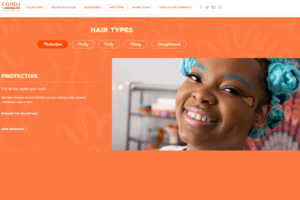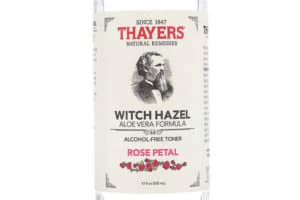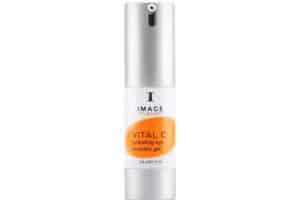In this post, I will be reviewing and comparing Neutrogena vs Olay moisturizers:
Neutrogena Hydro Boost Moisturizer:
Click here to see it on Amazon.
vs.
Olay Age Defying Gel Moisturizer:
Click here to see it on Amazon.
I’ll describe the ingredients in each and how they can benefit your skin. I’ll also give three alternative moisturizers that may give more value: Olay Regenerist Micro-Sculpting Cream, Yu-Be Deep Hydrating Moisturizer, and Options Rescue Post-Treatment Cream.
If you’d like to find out if these moisturizing anti-aging products really live up to their hype and whether they are worth it, keep on reading!
The Secret Behind Skincare Ingredients
The first thing I’m going to do is look at the ingredients. But before jumping into the review, let me throw in an interesting tidbit.
Did you know that companies actually have to follow certain protocols when it comes to listing ingredients on their products? This makes it easier to compare one product to another, as well as for safety reasons.
First, they have to list their ingredients according to the INCI, which stands for the International Nomenclature for Cosmetic Ingredients.
It’s basically a standardized format that companies have to use when listing ingredients. Second, they have to list their ingredients in descending order, starting with the ones with the highest concentrations.
In most products, the first ingredient listed is usually water. Ingredients that make up less than 1% of the product are listed at the bottom and can be arranged in any order.
For instance, if a product contains FD & C Yellow (which is a colorant) or methylparaben (which is a paraben), those two ingredients can be placed in any order toward the bottom since they’re both less than 1%.
I recommend paying attention to the top and middle of the list of ingredients because that’s what most of the product will be made of.
The most common formulation in moisturizers is oil-in-water. You have to have more water than oil. Whenever you have more oil than water, the product starts to separate.
That’s why they add emulsifiers to keep the oil and water together. A good example is Italian dressing. When you see the oil separating from the rest of the dressing, you have to shake the bottle to blend them together.
To keep you from doing that to your skincare and hair care products, companies use emulsifiers.
What Should You Look For?
Moisturizers have several basic ingredients, and these are the things you should look out for to see if you’re getting the most for your money.
- Water, or in some cases, aloe vera gel
- Moisturizing ingredients, such as occlusives and humectants
- Thickeners
- Esters
- Oil-soluble ingredients
- Preservatives
- Anti-oxidants
- Stabilizers
These are all the things you should be looking for. It’s also worth noting that even products that claim to be organic still have to have preservatives in one form or another so that they don’t spoil.
Neutrogena Hydro Boost Hyaluronic Acid Hydrating Face Moisturizer
Click here to see it on Amazon.
Now I’m going to break down the ingredients of Neutrogena Hydro Boost Face Moisturizer, one of my favorite anti-aging products. I’m not going to go through every single one of them. Instead, I’m going to focus on the ingredients in the first one-third of the list.
I do want you to keep in mind that companies change their ingredients every so often because raw materials are expensive. At the time of writing this post, the Hydro Boost I purchased from Amazon has a slightly different list of ingredients than that listed on Neutrogena’s website.
Ingredients in Neutrogena Hydro Boost
The first ingredient in the Hydro Boost is water. The second ingredient is dimethicone, and this is a silicone-based polymer. It’s a large molecule made up of smaller units bound together.
It’s synthetic because it’s man-made, and it’s used in hair conditioners, anti-frizz serums, creams, and lotions to give the skin tone and hair a very smooth feel and look. It prevents signs of aging by filling in fine lines and wrinkles.
This is why makeup primers and many anti-aging products are mostly made up of dimethicone.
The downside to dimethicone is that it’s an occlusive agent, which means it can form a plastic-like film over the skin. So I wouldn’t recommend this to those who are prone to breakouts and an uneven skin tone.
It’s also non-biodegradable, so it’s very hard to break down on your skin. Some sensitive skin and reactive skin types generally cannot tolerate this too well.
It also has vinyl dimethicone, which is used to adjust the viscosity or thickness of the product, and dimethicone crosspolymer or dimethiconol, which is a hydrogenated synthetic silicone similar to dimethicone.
It’s basically a non-greasy lubricant and gives the skin a temporary plump look. This helps to minimize fine lines and wrinkles.
The next ingredient is polyacrylamide, which is an acrylic resin that dissolves in water. It’s a stabilizer, binder, and thickener.
In and of itself, it’s not considered toxic, but it’s controversial in some circles because it can secrete acrylamide, which is a suspect carcinogenic linked to mammary tumors.
Because of the way Neutrogena Hydro Boost touts hyaluronic acid, you’d think it would be higher on the list, but it’s actually listed at number 17—out of the 19 ingredients. It’s right before Blue #1, which is a color additive that gives the product its blue hue.
Glycerin is higher on the list, and it’s actually the main humectant they’re using to bring moisture to the skin and improve your skin tone. It does say that it’s non-comedogenic, it’s a velvety primer, it’s 100% alcohol-free and dye-free, which is not exactly true.
My Final Thoughts on Neutrogena Hydro Boost
By using the name Hydro Boost and putting the product in blue jars, the company wants you to think of hydration. It even says 100% hydration right on the product, larger than written on any of their other anti-aging products.
However, hyaluronic acid is towards the bottom of the ingredient list. Neutrogena Hydro Boost also claims to have olive benefits. It contains sorbitan olivate, a fatty acid from olive oil used as a surfactant or an emulsifying agent.
And that isn’t really a benefit at all. It’s just to keep the product intact.
I know a lot of people are huge fans of Neutrogena and its products, but my thoughts are based solely on the ingredients. I am not brand specific. If you’re looking for a product that has a high amount of hyaluronic acid, then this is probably not the best deal for you.
In regards to our comparison of Neutrogena vs Olay, I would personally avoid the Neutrogena and look at other products, such as hyaluronic acid serums.
Olay Age Defying Gel Moisturizer with Hyaluronic Acid
Click here to see it on Amazon.
The next product I’m going to review is Olay Age Defying Gel Moisturizer with Hyaluronic Acid. Although the two products might seem kind of similar, they do have some major differences.
Ingredients in Oil of Olay Age Defying Moisturizer
In Hydro Boost, hyaluronic acid is the second to the last ingredient, while in Oil of Olay Age Defying Gel Moisturizer, hyaluronic acid is the seventh ingredient on the list. And in Hydro Boost, the second ingredient is dimethicone, while Oil of Olay’s second ingredient is glycerin.
Glycerin is a very strong humectant and is very similar to hyaluronic acid. Oil of Olay’s third ingredient is Cyclopentasiloxane, and that’s a silicone derivative used as a lubricant. Dimethicone is the fifth ingredient. These ingredients are common in many anti-aging products.
One of the big benefits of Oil of Olay vs Hydro Boost is that Oil of Olay does contain anti-aging agents. It has niacinamide which boosts other antioxidants.
Antioxidants help prevent signs of aging, including fine lines and wrinkles. In this case, the niacinamide in Oil of Olay boosts the properties of vitamin E – perfect for various skin types.
As far as humectants go, this is another example of how the beauty industry touts hyaluronic acid, but the actual main humectant is glycerin.
That said, Oil of Olay Age Defying Gel Moisturizer is a much better deal than Neutrogena Hydro Boost when it comes to minimizing signs of aging.
The next ingredient is butylene glycol. It’s petroleum-based, and it’s used as a solvent. If you easily breakout or have a bumpy skin tone, this might not work for you. Oil of Olay also uses preservatives.
They use three different parabens: methylparaben, propylparaben, and ethylparaben. It’s not that big of a deal, but the parabens in Oil of Olay Age Defying Gel Moisturizer are a bit higher on the ingredient list than I would like.
This is the same for the Oil of Olay Regenerist cream, which I will mention later. If you don’t want to use anything that contains parabens, keep in mind that the Oil of Olay Age Defying Moisturizer does have them.
My Final Thoughts on Oil of Olay Age Defying Gel Moisturizer
Olay Age Defying Gel Moisturizer with Hyaluronic Acid contains more hyaluronic acid than Neutrogena Hydro Boost. It also has some anti-aging benefits. The downside is that it does still use a lot of silicones to give you that smooth feel.
It also uses artificial colors and synthetic ingredients, so if you tend to breakout, react, have eczema, psoriasis, or some kind of autoimmune disease, this is probably not the best product for you.
In regards to our review of Neutrogena vs Olay, I would choose Olay as long it doesn’t irritate your skin or give you dry skin or sensitive skin.
It will help you avoid and minimize signs of aging with consistent use over time. If you don’t like either of these anti-aging products, choose the Olay Regenerist cream, which I will mention next.
Alternative Moisturizers You Can Try
I’m now going to give you some alternatives to get you the most for your money. I’m more value-driven than price-driven. It’s not just about the price, but about what you’re paying for. Alternative moisturizers you can try include:
- Olay Regenerist Micro-Sculpting Cream
- Yu-Be Deep Hydrating Moisturizing Lotion
- Options Rescue Post-Treatment Cream
1. Olay Regenerist Micro-Sculpting Cream
The Olay Regenerist Micro-Sculpting Cream is another very popular and effective cream. The Olay Regenerist cream hydrates deep in the skin to improve elasticity, firm the skin tone, and get rid of fine lines and wrinkles.
Click here to see it on Amazon.
This cream contains hyaluronic acid and vitamin B3, which help get rid of dead skin cells and regenerate the skin. It is best to apply the Olay Regenerist as the last step in your morning or evening skin care routine.
The Olay Regenerist is one of my favorite moisturizers as it feels so luxurious when applied, has effective ingredients, and has a good value.
Olay Regenerist also has an Amino-Peptide Complex II and combined with key anti-aging ingredients like carob extract, Olay Regenerist helps surface cell regeneration. Olay Regenerist is a more affordable anti-aging product out there that I recommend anyone to try, no matter the skin type.
2. Yu-Be Deep Hydrating Moisturizing Lotion
The Yu-Be Deep Hydrating Moisturizing Lotion is a new favorite moisturizer of mine because it is so very hydrating. It has glycerin, sodium hyaluronate, and vitamin E. They’ve recently updated the formula so that it is fragrance-free and doesn’t contain any parabens.
Click here to see it on Amazon.
The new formula also has chamomile, which is a natural anti-inflammatory that calms the skin down. This Yu-Be lotion was designed by a Japanese pharmacist and was actually tested by a mountain climber on Mount Everest.
It has top reviews on Amazon, and you will love how luxurious it feels on your skin.
3. RescueMD DNA Repair Complex PRO Scar Treatment Serum
Click here to see it on Amazon.
RescueMD DNA Repair Complex PRO Scar Treatment Serum is a revolutionary formula that dramatically improves the appearance of damage and scars by stimulating the skin’s natural reparative process.
What sets this scar treatment apart is its unique ingredient, lapachol, an exclusive molecule derived from the Pau D’Arco tree, which supports the skin’s natural ability to repair and regenerate.
The serum delivers effective results, making the skin look clear and smooth by improving the appearance of all types of skin damage and scars, including wrinkles, dark spots, and acne scars.
It is suitable for individuals with various types of scarring, such as those from acne, burns, injury, UV exposure, surgical incisions, and post-procedures like laser treatment, microneedling, and chemical peels.
The serum is also beneficial for delicate facial skin, addressing issues like hyperpigmentation, fine lines, and sunburn/UV damage. For optimal results, gently massage DNA Repair Complex into the skin until absorbed, applying it every day, twice a day, morning and night, for at least 4 weeks.
To see our favorite moisturizers, check out our post: Best Moisturizers for Very Dry, Sensitive, or Oily Skin to find the right moisturizer for your specific skin type, whether you have dry skin, oily skin, sensitive skin, or combination skin.
Conclusion – Neutrogena vs Olay
To recap, in our review of Neutrogena vs Olay: If you’re looking for a product that has a high amount of hyaluronic acid, then Neutrogena Hydro Boost is probably not the best deal for you. I would personally look at other products, such as hyaluronic acid serums.
Olay Age Defying Gel Moisturizer contains more hyaluronic acid than Neutrogena Hydro Boost. It also has some beneficial anti-aging benefits. The downside is that it still uses a lot of silicones that are artificial and may irritate your skin.
Both products will help prevent signs of aging, such as fine lines and wrinkles. Just remember to use it on a consistent basis each day for at least 2 weeks to see results.
I also recommend as an alternative: the Olay Regenerist Micro-Sculpting Cream, Yu-Be Deep Hydrating Moisturizing Lotion, or Options Rescue Post-Treatment Cream.










